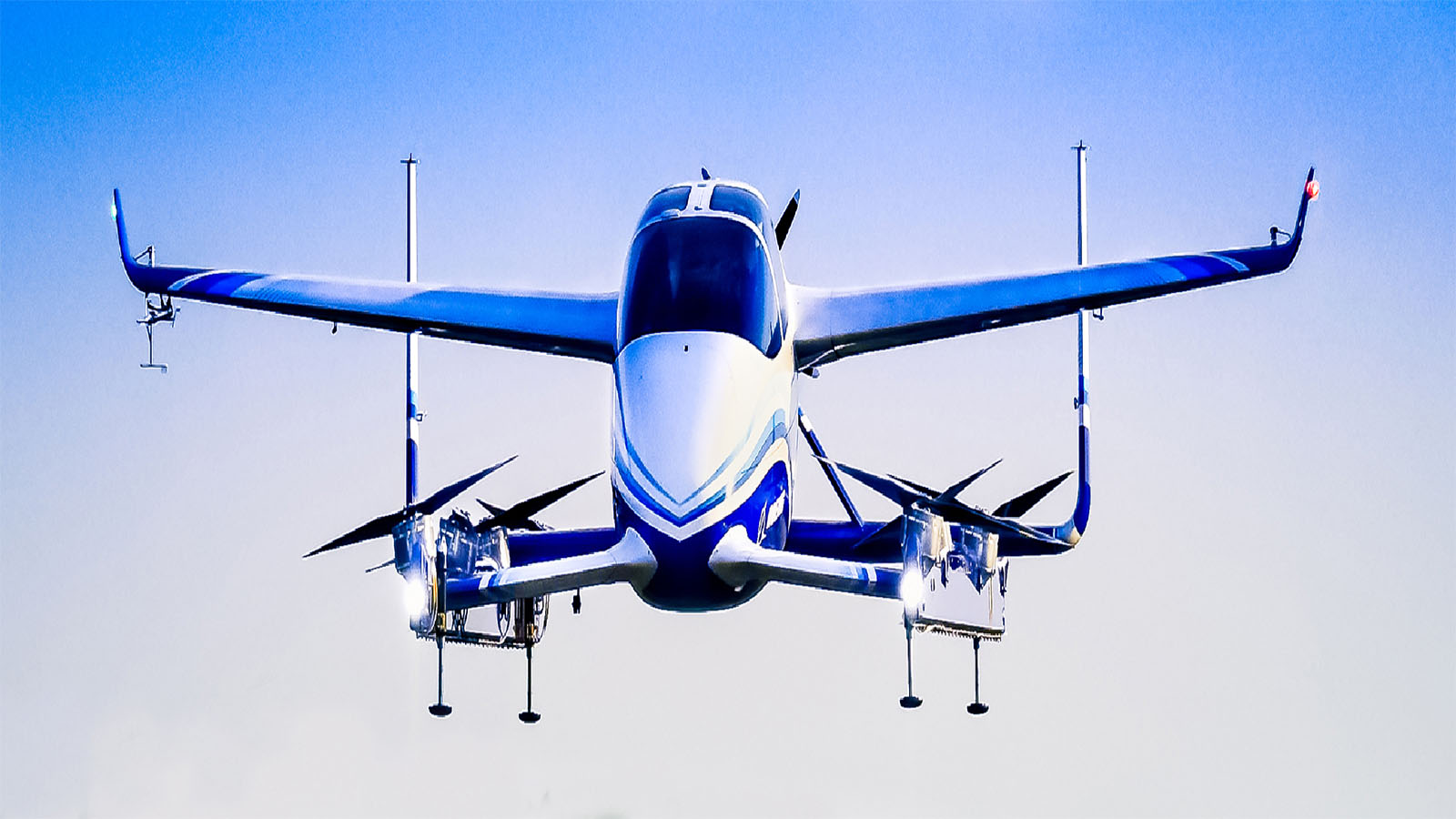Stay Up to Date
Submit your email address to receive the latest industry and Aerospace America news.
Imagine this: You’ve had a busier than expected day at the office, and before you know it, you’re running late to catch a long flight. To make matters worse, it’s rush hour and there’s just not enough time to drive to the airport or take the subway. But not to worry: PAV (Passenger Air Vehicle) Service just came online in your city. You order your ride, walk a block to the nearest staging area, and within minutes, you’re on your way.
The PAV gently and quietly cruises toward the airport as you take in a panoramic view of the city skyline, taking note of the standstill traffic below. Before you realize it, you’ve arrived—and to your delight, there’s still plenty of time to make your flight.
The Future is Now
This sounds impossibly futuristic, but work is in progress now to make this a reality within the next decade. The benefits go far beyond getting to the airport in record time. In the same way that commercial air travel has connected continents and made the world smaller, PAVs and other intelligent systems will shrink the distance between cities and regions—completely redefining how and where people live, work, and play. Imagine the freedom of living in the mountains and working in the city. Imagine the economic benefits for small towns with a lot to offer visitors but no connectivity to mass transit infrastructure. Imagine a world where rush-hour traffic is no more, and online orders arrive at your doorstep, directly from the factory, within minutes. This will change everything.
Challenges
But this future will not arrive on its own. Three broad trends driving aerospace today create significant challenges we must overcome:
First, physical and computational integration of flight vehicle systems is becoming increasingly key for performance, capability, and cost. Consider the case of PAV, where sensor fusion will enable software to make real-time decisions in a way that is safe, reliable, and certifiable; and where data fusion for operations will allow ground operations to effectively control a fleet of PAVs—ensuring passenger safety and comfort. Vertically integrated business structures will unlock the economies of scale needed to achieve a new feat for humankind—the production of aircraft grade vehicles at automotive rates.
Second, aerospace technologies are proliferating faster than ever before. We can see this democratization of technology in the drone revolution, for example, where unmanned systems have evolved to higher levels of autonomy. These intelligent systems have increased the number of pilots as piloting small aircraft has become more accessible, and in the same way these systems hold promise to play a role in solving the expected pilot shortage the industry faces in the future. This proliferation has brought increased competition from nontraditional players, and a heightened need to harden intelligent systems against emerging, sophisticated international threats that include state and non-state actors who see potential for public harm in these technological advances.
Third, we must attract talent. As the skills demanded by the transportation industry evolve, aerospace in particular will compete more intensely with the automotive sector and more directly with the technology sector for talent. We must work with the educational system to realign graduates’ skillsets with the new requirements of our industry, and work with our existing talent pools to reskill our industry’s labor force for the needs of the near future.
AIAA’s Role
We have been successful in the past as we, along with the rest of the industry, organized around aerospace’s traditional “Breguet Disciplines” of aero, structures, and propulsion. Leadership has been trained on these classical disciplines and most engineering organizations are built around them. But in order to attract talent and meet the demands of the next generation of mobility, we must lead the industry in reorganizing around the more nascent disciplines of intelligent systems, which include artificial intelligence, robotics, sensors and perception, human–machine interaction, statistics, data analytics, and cyberphysical security. AIAA must become better equipped to serve these professionals, and encourage the market as it establishes, certifies, and grows core competencies in intelligent systems disciplines all along the value chain.
The greatest generation put man on the moon. The next generation may get us to Mars. We can play a vital role in enabling this generation to create this future, but only if we act decisively.
Let us begin that work today, and together discover the untold future of tomorrow. ★
About johnlangford
Stay Up to Date
Submit your email address to receive the latest industry and Aerospace America news.




